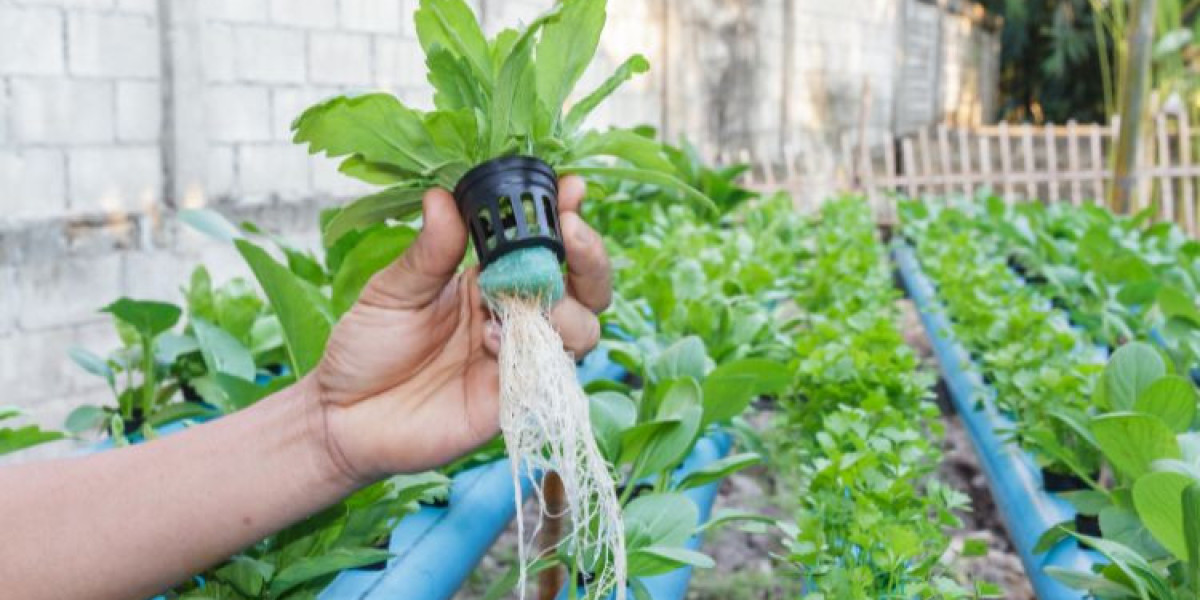Hydroponics, a revolutionary farming technique that allows crops to be grown in nutrient-rich water rather than soil, is gaining unprecedented traction in the agricultural sector. The global hydroponics market size reached a value of USD 7,068.4 million in 2023. The market is further assessed to grow at a remarkable CAGR of 20.1% during 2024-2032, projected to reach a value of USD 20,751.6 million by 2032. This post will delve into the various facets of the hydroponics market, including its segmentation, regional dynamics, competitive landscape, and future trends.
Understanding Hydroponics
At its core, hydroponics is a method of growing plants without soil, instead utilizing a nutrient solution. This innovative approach offers numerous advantages, including faster growth rates, reduced water usage, and the ability to cultivate crops in urban environments. With the world's population on the rise and arable land diminishing, hydroponics presents a viable solution for sustainable food production.
Market Overview
The hydroponics market is burgeoning, driven by increasing demand for fresh produce, urbanization, and the need for sustainable agricultural practices. This sector is not only about food production but also encompasses ornamental plants and herbs. The ability to grow crops in controlled environments minimizes the impact of pests and diseases, making hydroponics an attractive option for farmers seeking to maximize yield and reduce risk.
Market Segmentation
A. By Product Type
The hydroponics market can be broadly categorized into two product types: aggregate hydroponic systems and liquid hydroponic systems.
Aggregate Hydroponic System
Aggregate hydroponic systems utilize inert growing media such as gravel, rock wool, or clay pellets. These systems are popular for larger-scale operations and provide a stable environment for plants to grow. They are particularly effective for crops like tomatoes, cucumbers, and peppers, which require substantial support for their root systems.
Liquid Hydroponic System
Liquid hydroponic systems, often referred to as nutrient film technique (NFT) or deep water culture (DWC), rely on nutrient solutions flowing over the plant roots. These systems are efficient and suitable for smaller crops like lettuce and herbs, making them ideal for both commercial growers and hobbyists.
B. By Equipment
The success of hydroponics relies heavily on specialized equipment, which can be segmented into various categories:
Heating, Ventilation, and Air Conditioning (HVAC)
HVAC systems are crucial for maintaining optimal growing conditions. Proper temperature and humidity control ensure healthy plant growth and can significantly increase yield.
LED Growing Lights
With advancements in technology, LED lights have become a staple in hydroponics. They provide the necessary light spectrum for photosynthesis while being energy-efficient. This is particularly important in indoor settings where natural light is limited.
Irrigation Systems
Irrigation systems are vital for delivering nutrient solutions to the plants. Various methods, such as drip irrigation and flood-and-drain systems, can be employed depending on the crop type and growth stage.
Control Systems
Automated control systems allow for precise monitoring of environmental conditions and nutrient levels. This technology not only enhances efficiency but also reduces labor costs and minimizes human error.
Others
Additional equipment includes pH meters, water pumps, and air pumps, all of which contribute to the overall effectiveness of hydroponic systems.
By Crop Type
Hydroponics is versatile and supports a wide variety of crops. Popular choices include leafy greens like lettuce and spinach, herbs like basil and mint, and fruiting crops such as strawberries and tomatoes. As consumer preferences shift towards organic and locally-sourced produce, the hydroponics market is poised to capitalize on this trend.
Regional Analysis
The hydroponics market exhibits varying dynamics across different regions.
North America
In North America, particularly the United States and Canada, the market is robust due to advanced technology adoption and a strong focus on sustainable practices. Urban farming initiatives are on the rise, driven by consumer demand for fresh, local produce.
Europe
Europe has seen significant growth in the hydroponics sector, fueled by government support and sustainability initiatives. Countries like the Netherlands are leading the charge, with extensive research and development in hydroponic technology.
Asia-Pacific
The Asia-Pacific region is emerging as a significant player in the hydroponics market, particularly in countries like China and Japan. Rapid urbanization and increasing food demand are propelling the adoption of hydroponic systems in this region.
Latin America and Middle East & Africa
While these regions are still developing their hydroponics capabilities, there is growing interest and investment. The need for food security in arid regions makes hydroponics an appealing option for agricultural development.
Competitive Landscape
The hydroponics market is characterized by a mix of established players and emerging startups. Major companies include:
- AeroFarms
- HydroFarm
- Greensmith Farms
- Netafim
These companies are continually innovating, focusing on automation, sustainability, and efficiency to maintain their competitive edge. Collaborations and partnerships within the industry are also on the rise, facilitating knowledge exchange and technology transfer.
Future Trends and Forecast (2024-2032)
As we look toward the future, several trends are likely to shape the hydroponics market.
Technological Advancements: Automation and AI will play a crucial role in optimizing hydroponic systems. Smart farms equipped with sensors and data analytics can streamline operations and enhance productivity.
Sustainability Focus: With increasing awareness of environmental issues, hydroponics is expected to gain traction as a sustainable alternative to conventional farming. This shift will be supported by government policies encouraging eco-friendly practices.
Urban Farming: As cities expand, urban agriculture will become increasingly important. Hydroponics offers a solution for producing food in limited spaces, reducing the carbon footprint associated with food transportation.
Diverse Crop Production: The market will likely see an expansion in the variety of crops grown hydroponically, driven by consumer preferences for organic and specialty produce.



